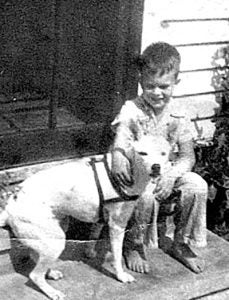And Now You Know: Passenger trains come to Orange, finally
Published 1:56 pm Wednesday, November 6, 2019
On September 1, 1856, a group of promoters met in Houston to discuss providing rail service to Orange. Their aim was to tap into the booming East Texas wood products industry.
On that day the Sabine and Galveston Bay Railroad and Lumber incorporated. The main terminus of the line would be Madison. The railroad promoters hoped to have the line running by 1860.
By 1858, both the town and the railroad had new names.
The post office objected to the name of the town because there was already a town named Madisonville northwest of Madison. The post office felt there would be confusion with two towns so closely named.
In January, the Texas legislature passed a bill changing the name of the town to Orange.
In Louisiana, another group of promoters had organized the New Orleans, Opelousas, and Great Western Railroad and on April 12, 1857 laid the last rails on a line between New Orleans and the Atchafalaya River.
The Texas promoters saw the possibility of an intercontinental system and changed the name of their railroad to the Texas and New Orleans Railroad in1858.
On December 24, 1859, announced plans to connect to the Louisiana line.
Along with the announcement about connecting the two lines together, they also announced that there would be passenger service in the future.
Construction of the original Texas and New Orleans line cost about $30,000 per mile, this included station buildings and structures for fuel and water.
Rails at that time weighed 58 pounds to the yard. Modern rails weigh 113 to 115 pounds per yard.
The line from Beaumont to Orange was completed in 1861. There were no dedicated passenger trains. Passenger cars and freight cars rode behind the same locomotives.
Passengers traveling from Beaumont to New Orleans rode the train from Beaumont to Orange. At Orange, they changed to river steamers for the short run to Niblett’s Bluff. There they boarded stagecoaches for the trip to New Iberia. The next leg was from New Iberia to Brashear City (now Morgan City) by steamboat. At Brashear City they boarded a real passenger train for the remainder of the trip to New Orleans.
During the Civil War, Dick Dowling brought a group of his soldiers to Orange and ripped out a section of rail line west of Orange. The rails were used to build part of Fort Griffin at Sabine Pass, where Dowling and his 37 Irishmen defeated the Yankee invasion fleet.
Available records do not show when the freight lines started moving products in and out of Orange after the end of the war.
Available capital was raised to rebuild the line Dowling and his soldiers had removed and to complete the line between Beaumont and Houston.
On October 16, 1876, the first passenger only train came to Orange. The passenger line came down Front Street to the depot located where Fourth Street met the river.
It was a big event. Most of Orange turned out to witness the arrival of the train. Passengers disembarked and new passengers boarded the train.
There was no turnaround for the train, it had to back down the line it came in on. Most of the observers stayed to watch the train back down the line.
When the locomotive got to the point where the line turned to the north, the locomotive disconnected the cars and went onto a turntable. The little 2-2 locomotive was swung around towards Houston and reconnected to the passenger cars.
Five years later, the line between Orange and New Orleans was completed and passenger trains started running all the way between Houston and New Orleans.
Some years later, the Texas and New Orleans line was absorbed into and has remained part of the Southern Pacific Lines.
The depot at Fourth Street and the river was closed and business moved to the new depot on Green Avenue and 11th Street.
Passenger trains no longer stop at Orange, but they still pass the depot which has been restored and has a future as a site for community social events and museum.
“And now you know.”







